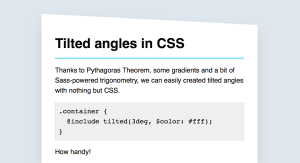Key Takeaways
- Copying or ‘stealing’ from other designs can be beneficial for novice designers, as it can lead to conventionality and familiarity for users. However, it is crucial to adapt and modify the design to make it unique.
- Designers can ‘steal’ from their own previous work, especially from designs that were never used or completed. This can help in maintaining their distinctive design style and can be an efficient use of time and resources.
- Stealing’ from discrete sources, or sources that are already hidden, can lead to truly unique and original designs. This involves searching through various sources to find unused and forgotten ideas and incorporating them into the design.
- While copying and ‘stealing’ can be beneficial, it is important to be careful and avoid directly copying well-known sources. The focus should be on copying the inspiration behind the design, not the outcome. The final design should be distinct and original.
Pablo Picasso, the first living artist to be featured in the Louvre, influenced the artistic world in a uniquely original way. So why is he known for saying “Good artists copy, great artists steal”?
It’s true. Picasso really said, “Good artists copy, great artists steal.” Or at least, since his death in 1973, everyone believes he said that.
But why? Why would someone as original as Picasso say something as ironic as that? And what did he mean? Google Picasso’s quote, and you’ll find plenty of opinions and interpretations as to what he really meant.
My intent here, then, is to uncover one possible interpretation. This interpretation involves three levels of design, each of which:
- involves some aspect of copying or stealing,
- shows increasing design maturity, and
- adapts Picasso’s quote to modern graphic design.
Three Levels of Design
To help you understand my reasoning, I’ve segmented this interpretation into three levels. Are these the only three levels of design? Of course not. They’re only a guide to help improve your design maturity as related to copying and stealing.
I’ve included short case studies to effectively demonstrate the primary concept at each level — at least, that’s the intent. You be the judge as to whether or not they’re effective examples.
Level 1: Copy, Don’t Create
I’m all for being as original as possible, but a beginning Web designer (or any designer, for that matter) should start out by copying other well-created designs.
Gerry McGovern, Web copywriting guru, makes the same argument for writers:
One of the simplest tricks that professional writers learn can greatly ease the process of getting ready to write: look for a model of the kind of article you need to do, then dissect it, analyze it – and copy it. . . . Novice writers often make two mistakes: they think they need to be entirely original, and they think they need to wait for “inspiration.” Take it from the pros: for most kinds of writing, originality and inspiration are overrated.
Replace the instances of “writers” and “writing” in Gerry’s quote with “designers” and “Web design” and the message is the same: copy, don’t create.
Surprisingly, there’s a positive side effect to copying: conventionality. Building on the same foundation as other sites — specifically, layout and information architecture — often leads to intuitiveness and familiarity for the end user. By no mistake do BarnesAndNoble.com and Amazon.com have similar navigation structures.
Additionally, if your career is anything like mine, you hardly ever enjoy the luxury Michelangelo relished as he expended four long years completing the Sistine Chapel ceiling. Often, we have only four months — more likely, four weeks. So, in a commercial art environment such as Web design, copying is almost mandatory, given the time constraints and budget limitations we face.
Case Study
The source:
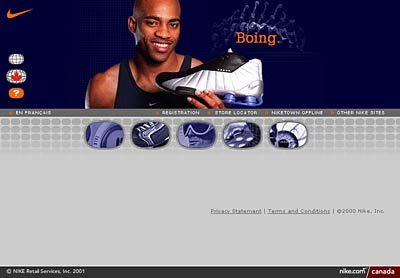
The result:
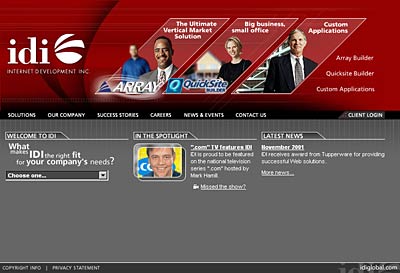
IDI’s corporate Website, created over two years ago, exemplifies Level 1 design very appropriately. Most of us working on the project at the time — including myself, the Art Director — had less than two years of Web design experience. We needed a polished source to act as the foundation for the layout of our site.
After hours of searching, we found that Nike’s Canada Website was the perfect fit. The design style was technically appealing. The layout architecture was simple, yet strong. The only thing lacking was additional text to draw visitors in.
So we took Nike’s design and ran with it. You don’t have to struggle to see the adapted result is close to the original source.
Level 2: Steal From Yourself
Simply put, one of the best sources from which you can steal is yourself.
Think about it. You probably have a folder on your hard drive that contains dozens of designs that were never used or completed. You’ve created designs that have been a success with clients. And more importantly, your distinctive design style is probably a selling point for many of your clients.
Why not tap into some of the great work you’ve created that was either unused or never fully completed? Or even better, reinvent some of your work that was highly successful in establishing your personal style?
Case Study
The source:

The result:
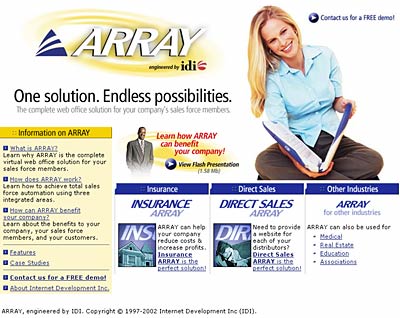
The final design for the ARRAY Website was the result of discarded design usage. The QuicksiteBuilder layout was created a few years ago, but never made it past the comping stage (notice the filler text and Rubberball watermark on the comp graphic).
Instead of starting at ground zero with the ARRAY Website — which did make it to production — I chose to create the layout using elements from the unused QuicksiteBuilder comp design. QuicksiteBuilder and ARRAY are similar products, making a ‘steal’ the ideal solution. The style established by the photo of the woman, the headline and sub-headline, and the three column highlights were all a direct result of personal stealing.
Level 3: Steal From Discrete Sources
A good design friend of mine, Jesse Bennett, adorns his signature on message board posts with a quote by Albert Einstein: “The secret to creativity is knowing how to hide your sources.”
Perhaps the easiest way to ‘hide’ your sources is simply to use sources that are already hidden.
“Picasso hardly meant that great artists steal popular designs whose original source is known to everyone,” says Wes George, writer for The Mac Observer and financial Mac nut.
“What Picasso did mean was that great artists rummage through the great junk heap of lost, bypassed, and forgotten ideas to find the rare jewels, and then incorporate such languishing gems into their own personal artistic legacy… Picasso implied that great artists don’t get caught stealing because what they appropriate they transform so thoroughly into their own persona, that everyone ends up thinking the great idea was theirs in the first place.”
Level 3 entails the difficult process of searching through magazines, books, Websites, historical artifacts, cultural compositions and other rich design sources to locate those unused and forgotten ideas Wes speaks of.
Case Study
The source:
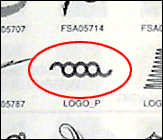
The result:

Recently, I was asked to design the logo for a T-shirt to be offered to IDI’s Quality Assurance (QA) department.
The design for the logo shown above was ‘stolen’ from MasterClips’ vector clip art collection. As I thumbed through the catalog, I somehow landed on the clip art shown in red. Although created years ago, the looped design had a trendy Generation X feel to it — exactly what I was looking for, as the majority of the QA department were Gen X’ers.
The chances of someone else having used this particular piece of clip art were very slim. And the chances of the intended audience — or anyone else for that matter — being familiar with such a piece were even slimmer. Translation? A perfect source for stealing.
A Warning
This article wouldn’t be complete without a warning to be careful when copying well-known sources. If I were to summarize this warning in one sentence, this would be my golden verbiage: copy the inspiration, not the outcome.
For example, since the introduction of the iMac, Apple’s design has been inspired by a very liquid and visually tangible look and feel, coupled with a “less is more” attitude.
A beautifully rendered copy of the inspiration behind Apple’s design leads to something like MailFrontier.com
At the opposite end of the spectrum, a horribly blatant copy of the outcome of Apple’s design leads to something like uSight.com
In short, be careful what you copy, and how you copy. Take the time to make the design your own, or you’ll land a spot as the latest design thief on Pirated-Sites.com.
Bibliography
Picasso Resources
http://www.picasso.com/links
Quotations by Pablo Picasso
http://painting.about.com/library/blpicassoquotes.htm
Piracy Against Apple, It’s A Cultural Thing, Wes George
http://www.macobserver.com/columns/appletrader/99/august/990823.html
The Web Content Style Guide, Gerry McGovern
http://www.gerrymcgovern.com/guide_write_08.htm
MasterClips Vector Clip Art
http://www.masterclips.com
ARRAY
http://www.webofficesolutions.com
Pirated-Sites.com
http://www.pirated-sites.com
Frequently Asked Questions about Design Inspiration and Originality
What does it mean to “steal” a design?
In the context of design, “stealing” doesn’t mean copying a design pixel by pixel. Instead, it refers to the process of understanding the underlying principles, ideas, and techniques that make a design great, and then applying those elements in your own unique way. It’s about learning from the best and using that knowledge to create something new and original.
How can I “steal” a design without infringing on copyright?
It’s crucial to understand the difference between stealing a design and infringing on copyright. The latter involves directly copying a design without permission, which is illegal and unethical. On the other hand, “stealing” a design in the context we’re discussing means drawing inspiration from a design, understanding its principles, and applying them in your own work. Always ensure your final design is distinct and original.
How can I identify the underlying principles of a design?
Identifying the underlying principles of a design involves a deep understanding of design elements and principles such as balance, contrast, emphasis, movement, pattern, rhythm, unity, and space. By studying a design closely, you can understand how these principles are applied and how they contribute to the overall effectiveness of the design.
How can I apply the principles I’ve learned from a design to my own work?
Once you’ve identified the principles at work in a design you admire, the next step is to apply them in your own work. This doesn’t mean copying the design, but rather using the principles as a guide. For example, if you notice that a design uses contrast effectively, you might experiment with contrast in your own design.
What’s the difference between a good designer and a great designer?
A good designer has a strong understanding of design principles and can create aesthetically pleasing work. A great designer, however, goes beyond this. They’re able to draw inspiration from a variety of sources, understand the underlying principles that make a design effective, and apply these principles in innovative ways to create truly unique and impactful designs.
How can I become a better designer?
Becoming a better designer involves continuous learning and practice. Study the work of designers you admire, understand the principles they use, and apply them in your own work. Experiment with different techniques, seek feedback, and always strive to improve.
How can I avoid creating a design that’s too similar to my source of inspiration?
It’s important to ensure that your design is distinct from your source of inspiration. One way to do this is by drawing inspiration from multiple sources, rather than just one. This can help you create a design that’s a unique blend of various influences, rather than a copy of a single design.
How can I develop my own unique design style?
Developing your own unique design style involves understanding your personal tastes and preferences, experimenting with different techniques and principles, and refining your approach based on feedback and self-reflection. It’s a process that takes time and practice, but it’s a rewarding journey that can help you stand out as a designer.
How can I stay updated with the latest design trends?
Staying updated with the latest design trends involves continuous learning. Follow design blogs, attend design conferences, participate in design communities, and regularly review the work of leading designers. This can help you stay informed about the latest trends and techniques in the design world.
How can I use design trends in my work without simply copying them?
Using design trends in your work involves understanding the principles behind the trend and applying them in a way that aligns with your own unique style. It’s not about copying the trend, but rather about using it as a source of inspiration to create something new and original.
Cameron Moll is a freelance new media designer, with a passion for functional Web design, clean markup, and savvy print design. Some say this sums things up quite nicely. Others say his web site does the trick.
Published in
·CMS & Frameworks·Databases·Debugging & Deployment·Patterns & Practices·PHP·Programming·July 11, 2014
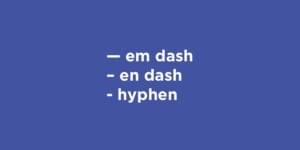
Published in
·Accessibility·Content·Content strategy·Copywriting·Design·Design & UX·Typography·UI Design·Usability·UX·July 13, 2017



